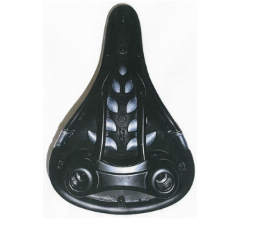The design registered at the German Patent and Trade Mark Office had as its only graphic representation the drawing showing the underside of a bicycle saddle.

The German Supreme Court referred the following questions to the Court of Justice for a preliminary ruling:
(1) Is a component incorporating a design already ‘visible’ within the meaning of Article 3(3) of the Directive (98/71) if it is objectively possible to recognise the design when the component is mounted or is visibility essential under certain conditions of use or from a certain perspective of the observer?
- Is the answer to Question 1 to be given to the first question whether visibility is essential under certain conditions of use or from a particular perspective of the observer?
(a) In assessing the ‘normal use’ of a complex product by the end consumer within the meaning of Article 3(3) and (4) of Directive 98/71, is the intended purpose of use of the component or complex product by the manufacturer relevant, or is the normal use of the complex product by the end consumer relevant?
(b) What are the criteria for assessing whether the use of a complex product by the end consumer is ‘normal’ within the meaning of Article 3(3) and (4) of Directive [98/71]?
The Court starts from the premise that an assessment in abstracto of the visibility of the component part incorporated in a complex product, without any link to a specific situation in which that product is used, is not sufficient for that component part to be eligible for design protection under Directive 98/71. In that regard, it must be stated, however, that Article 3(3) of Directive 98/71 does not require that a component part which is incorporated in a complex product must remain visible in its entirety and at all times during the use of the complex product.
According to Article 3(4) of Directive 98/71, this provision refers to the ‘normal use’ of the complex product by the end consumer and not to the use intended by the manufacturer of the component part or the use intended by the manufacturer of the complex product.
As regards the question of what use of a complex product by the end consumer constitutes ‘normal use’ within the meaning of Article 3(4) of Directive 98/71, it must be pointed out at the outset that the fact that that provision does not specify what type of use of such a product is covered by that concept and refers generally to the use of such a product by the end consumer suggests a broad interpretation of that concept.
The concept of ‘normal use’ within the meaning of Article 3(4) of Directive 98/71 must cover actions connected with the normal use of a product and other actions which may reasonably be carried out during such use and which are normal from the point of view of the end consumer, including actions which may be carried out before or after the product has fulfilled its principal function, such as storage and transport.
The Court therefore decided in its judgment that Article 3(3) and (4) of Directive 98/71 must be interpreted as meaning that the requirement of ‘visibility’, laid down in that provision, for a design applied to or incorporated in a product which constitutes a component part of a complex product to be eligible for design protection must be assessed in relation to a situation of normal use of that complex product, so that the component part in question, once incorporated in that product, remains visible during that use. To that end, the visibility of the component of a complex product during its ‘normal use’ by the end consumer must be assessed from the point of view both of that consumer and of an outside observer, it being clear in that regard that that normal use must cover the actions which are carried out during the principal use of the complex product and those which must be carried out habitually by the end consumer in the context of that use, with the exception of maintenance, servicing or repair.
Judgment of the Court of Justice of 16 February 2023. Case C-472/21.


 Español
Español Deutsch
Deutsch